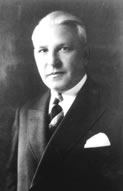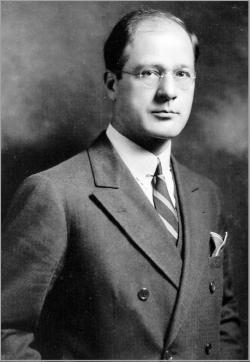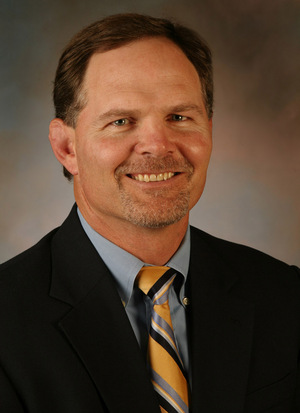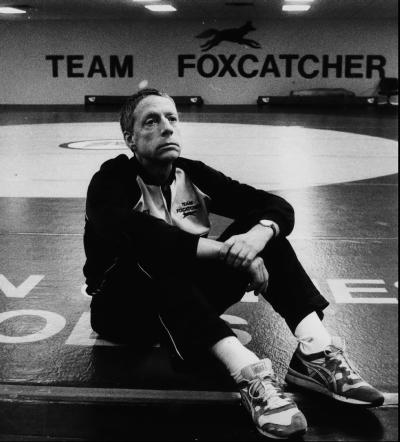A Historical Perspective on Amateur Wrestling in the United States
The “long” answer to “What’s Wrong with USA Wrestling” and why we have the fewest Olympic qualifiers for the 2016 Olympics since 1952 starts with a historical perspective of the issues involved with leadership of amateur wrestling in America. If one really wants to look at the issues involved, it helps to broaden one’s outlook with a historical and “big picture” approach.
The AAU-Amateur Wrestling Union started in 1888 with William Buckingham Curtis. He was also one of the founders of the New York Athletic Club in 1868, and the Chicago Athletic Club in 1872. Curtis competed in sprinting, weightlifting, gymnastics, and rowing attending Wabash College at Crawfordville, Indiana although he came originally from Vermont. Curtis developed a passion for speed skating (not wrestling).
Most of us are familiar with James E. Sullivan who was the second president of the AAU, 1906-1909, and one of the organizers of the United States Olympic Committee which was founded in 1894. Sullivan and Columbia History Professor William Sloane were the two founding members of the USOC. The James E. Sullivan Award was established in 1930, and is still the highest honor bestowed on an amateur athlete in America. Only three wrestlers have ever won the award: John Smith (1990), Bruce Baumgartner (1995), and Rulon Gardner (2000). Over the last 86 years, 34 track & field athletes have won the Sullivan Award.
The first National AAU Wrestling Championship was held in 1894 with eight weight classes, but no Americans competed in the 1896 Olympics which only used one weight. There was no 1900 Olympics, and in 1904 the Olympics was held in Los Angeles where only Americans competed so Americas won 21 medals for 7 weights competed. In 1908 at London, we sent 6 wrestlers to compete in freestyle and won two gold medals with lightweights George Mehnert and George Dole. We sent no wrestlers to the Stockholm Olympics in 1912 which was only wrestled in Greco-Roman. The Olympics were not held in 1916 due to World War I. At the early Olympics, all bouts were held inside an oval running track and one bout in the 1912 Olympics lasted 11 hours and 40 minutes. Obviously, the rules were completely different than what we know today.
Amateur wrestling developed through various athletic clubs and YMCAs in the United States, but intercollegiate wrestling began initially in the East with Ivy League schools forming the EIWA-Eastern Intercollegiate Wrestling Association in 1905 with four schools: Columbia, Penn, Princeton, and Yale. The first intercollegiate wrestling match was held in 1903 between Yale and Columbia. Cornell was added in 1908, Lehigh in 1913, and Penn State in 1918. Wilfred Cann of Rutgers, 1930-1937, was one the early leaders in the East as he wrote A Manual of Wrestling Especially for Teachers in 1912. Cann coached the 1924 Olympic squad. The Western Conference, later known as the Big Ten, began their tournament in 1911, but it was not “official” until 1913 with two teams, and there were six teams competing at the 1914 event. Paul Prehn’s Illinois squads were tops in the conference throught the 1920s until Cliff Keen arrived in 1925, the same year Prehn wrote Scientific Wrestling. Prehn became the President of the National Boxing Association. Ed Gallagher, the father of NCAA Wrestling and Keen’s coach, began at Oklahoma A&M in 1916. Charlie Mayser started wrestling at Iowa State in 1915. Billy Sheridan started Lehigh’s wrestling program in 1912, and coached the Engineers for 41 seasons.

C.W. Streit
Amateur wrestling was slow to develop in America as it lacked leadership and was not embraced by the AAU or USOC. It was not promoted well, and little money was funneled into the sport for expenses to compete nationally or internationally. George Streit, a football, basketball, and track star at Auburn and Washington & Lee was assigned to the sport of wrestling by the AAU and USOC, and he did little to help promote the sport. Streit managed the Olympic Track squads, 1920-1936. Streit was the leading influence for the sport of wrestling for international competitions for nearly half a century.
In the research on my book, Legends of Michigan: Cliff Keen, Keen had no positive words for Streit. Keen served on the Olympic Rules Committee, 1928-1952, and like many in the sport, he was frustrated by the lack of support from the AAU and USOC. Keen helped organize the National Wrestling Coaches Association with less than 40 member initially, and Raymond Clapp of Nebraska was its first President; he coached Nebraska, 1911-1926. Clapp published the first NCAA Rule Book in 1927. The NWCA became the most powerful political influence on the AAU for decades for amateur wrestling. Nobody promoted amateur wrestling more than Keen as he was responsible for mat, headgear, uniform, scoring-individual and team, etc. Keen's entrepreneurial skills culminated in founding a company, known today as Cliff Keen Athletic, that still continues to greatly influence the sport right up to the modern day, now run by his grandson, Tom. It is one of the largest sporting goods companies in the world, and holds contracts to outfit Major League Baseball and the National Football League for officials, referees, and umpires.
One of Keen's prized pupils, Murl Thrush, became Wrestling Coach at the New York Athletic Club, 1929-1971. Thrush won Three National Team Championships, and was runner-up five times; he sent 40 wrestlers to the National AAU Championships in that span. Keen met Thrush while teaching at Frederick, Oklahoma, and persuaded him to follow him to Ann Arbor to attend Michigan. Thrush also refereed more college and AAU bouts than any man in his era, 1931-1973; yet to this day, Thrush, has never been inducted into the National Wrestling Hall of Fame. The New York Athletic Club remains one of the top sponsors of amateur wrestlers in their Olympic quest today.
College wrestling in America had no scoring as we know today, bouts were won on riding time or referee’s decision if the bout went overtime. These bouts were fifteen minutes, and some could go much longer in overtime. Few of the coaches or other leaders in the sport could agree or come to consensus on rules changes to improve the sport. There was not seeding for tournaments. They could not agree on team scoring for tournaments until 1929 for NCAA Championships and 1934 for the Western Conference. The leaders of wrestling couldn’t come up with bout scoring until 1939. The scoring “gaff” not only hurt our sport with spectators, but more importantly with the press who report on sports; wrestling fell way down the list of priorities with sports media which is a trend that continues right up until modern day.
Our first Olympic Wrestling Coach, George Pinneo, in 1920 was originally from Hastings, Nebraska and graduated from Springfield College in 1904. After graduation, he became YMCA Director in Gary, Indiana and later at the Grand Rapids YMCA in Michigan. Pinneo helped develop a lot of great wrestlers in Indiana, and that is why initially the Indiana Hoosier wrestling program was so strong. Later, Billy Thom became the Indiana coach in 1927, and he also coached the 1936 Olympic squad. Hugo Otopalik of Iowa State, Mayser’s Assistant who became Cyclone Head Coach, coached the 1928 and 1932 Olympic squads. Pinneo organized the 1928 and 1932 Olympic Trials at Grand Rapids, MI and Columbus, OH.
Another historic problem for amateur wrestling was its chief rival, “professional” wrestling. Farmer Burns and other promoters scouted amateur wrestlers like Earl Caddock, and enticed them into “Pro Rasslin” much like the UFC-Ultimate Fighting Championship does today. Burns trained over 1600 wrestlers including Frank Gotch and Jack Reynolds, Indiana Head Coach, 1922-1927. Many college coaches including Billy Thom, Reynolds, and Mike Howard of Iowa would wrestle “professionally” to earn extra monies since they were paid so little by their universities. Thom wrestled over 500 “professional” bouts.
Very few wrestlers or colleges could afford to send wrestlers to national competitions unless they were held in a nearby proximity. Michigan, for example, had over 75 NCAA qualifiers from 1928-1962 unable to participate due to academic priorities and/or financial considerations. Jack Van Bebber, Three Time NCAA Champion at Oklahoma A&M, had to hitchhike to Los Angeles in 1932 to weigh in for the Olympics, and almost didn’t make it; he went on to win a gold medal. The 1936 NCAA Wrestling Championships held at the campus of Washington & Lee in Lexington, Virginia was a qualifier for the Olympics with only 72 contestants and just 3 at heavyweight.
The rift between amateur and professional wrestling was significant. At one time, professional wrestling was legitimate, and the bouts were not always “staged.” Through the 1930s with the Great Depression, things changed as promoters had fewer customers and more theatrics were introduced so the “sport” became more “entertaining.” In my book a funny story includes when Keen used “Professional” Jim Londos to help him promote the 1934 NCAA Wrestling Championships in Ann Arbor. This also had a detrimental effect on the press covering sports as they began to snub wrestling as a “fraud” and unethical sport they didn’t want to cover.
The Olympics were not held in 1940 or 1944 due to World War II, but Keen coached the 1948 Olympics along with Oklahoma A&M “buddy” Art Griffith. Keen wrote a 30 page summary of the problems that ensued with the lack of support in training and competing from the AAU and USOC.
NCAA Wrestling finally added individual bout scoring for dual meets in 1937 and championships in 1941 along with seeding for tournaments. This was part of the great leadership that Keen provided, and that was getting such strong personalities to come to consensus on important issues that would promote and improve the sport in a positive way so it would be more “fan friendly.” Nobody promoted amateur wrestling more than Cliff Keen through the century; he passed away in 1991 at the age of 90.
As amateur wrestling grew and developed, its best wrestlers came from its colleges, but the drawback was the same dilemma faced today. That is that our best wrestlers compete under NCAA rules 9-10 months a year for American “folkstyle,” and the rest of the world competes in freestyle 12 months a year. Our country never has embraced or adopted Greco-Roman wrestling, and didn’t even begin holding National AAU Championships in the sport until 1953 when Joe Scalzo, Fendley Collins, Dale Thomas, and Dean Rockwell provided instrumental leadership. This same leadership brought international competitions for World Championship events in 1961 including the World Cup. Few Americans thought that the “old black mark system” of points for advancement at tournaments was fair. FILA was founded in 1912 and has been headquartered in Lausanne, Switzerland since 1921, but changed their name to United World Wrestling in 2014, has made over 700 rule changes in the past 25 years in an effort to help wrestling be more “fan friendly.” There have been 7 Presidents of the organization since 1921, all from European countries. USA Wrestling has never been able to assert its influence politically within the organization to make significant changes.

Avery Brundage
Avery Brundage, an Illinois graduate, was USOC President, 1928-1952, and IOC President, 1952-1972. Brundage had a profound influence of the Olympic sports for four decades, and did not embrace the sport of wrestling. In fact, in 1956, he banned Bill Smith, 1952 Olympic Gold Medalist, from participating at the 1956 event although he qualified by pinning Dan Hodge at the Olympic Trails. Brundage nixed Smith for being a high school coach and accepting a salary for those duties. After the "Czar" ruled the United States Olympic Program for 44 years, 1928-1972, it was decided that each President would have a term limit of 4 years. The IOC eliminated amateurism in 1971, and the USOC in 1978. A lawsuit resulted in the Amateur Sports Act of 1978 which named the USOC rather than the AAU as the governing body for Olympic sports in America; the lawsuit also contributed to the USOC move from New York to Colorado Springs. The biggest influence amateur wrestler had politically on the USOC over the past several decades was when former Nebraska Wrestler, 1980-1985, Jim Scherr, Two Time World Silver Medalist and 1988 Olympian, was Chief Executive Officer of the USOC, 2003-2009; Scherr also was the Executive Director of USA Wrestling, 1990-2000. Scherr earned his M.B.A. at Northwestern University, 1985-1989.

| USOC President |
College |
Sport |
Tenure |
| Krumm, Philip |
n/a |
Speed Skating |
1973-1977 |
| Kane, Robert |
Cornell |
Track&Field |
1977-1980 |
| Simon, William |
Lafayette |
n/a |
1981-1985 |
| Kelly, John Jr. |
Penn |
Rowing |
1985-1985 |
| Helmick, Robert |
Drake |
Water Polo |
1985-1991 |
| Walker, LeRoy |
Benedict |
Track&Field |
1992-1996 |
| Hybl, Bill |
Colorado College |
n/a |
1996-2000 |
| Baldwin, Sandra |
Colorado, Univ. of |
Swimming |
2001-2004 |
| Ueberroth, Peter |
San Jose State |
Water Polo |
2005-2008 |
| Probst, Larry |
Delaware |
n/a |
2008-2016 |
The sport of amateur wrestling was influenced the most from Oklahoma from the 1920s through the 1960s when the United States Wrestling Federation was formed in 1968. It sent its rules book and by-laws to over 11,000 high school and college wrestling coaches in 1970, and a “civil war” ensued between the AAU and USWF for the next 12 years until in 1982 a federal judge ordered the AAU to resign as the governing body to the IOC. Wally Johnson of Minnesota was the first president of the USWF, and Ken Kraft, the Midlands founder at Northwestern, led from 1973-1976. Rick Bay, former Michigan Head Wrestling Coach, 1970-1974, was President of the USWF 1977-1980, and USA Wrestling Man of the Year in 1980 for his efforts in the sport. Werner Holzer, 1959 Illinois graduate, was President, 1981-1985. The USWF became USA Wrestling in 1983, and has been in control over amateur wrestling for the past 33 years for national and international events with over 159,000 members and 29,000 wrestling clubs. It has been headquartered at Colorado Springs, Colorado after moving from Stillwater, Oklahoma in 1988. Another big change was the Divison II and Division III wrestling in 1963, and 1974. The 1970s and 1980s revolutionized amateur wrestling with the implementation of Title IX, and all the political changes with the NCAA, AAU, USOC, and IOC. History and Reorganization of USOC from 1976

John du Pont
When USA Wrestling began, it needed financial support and John du Pont who established a wrestling program at Villanova in 1985, built the Foxcatcher Farms Olympic Training facility in 1989, and “donated” $3 million yearly to USA Wrestling from 1987-1995 as he took control of amateur wrestling in America for National and International events. The Senior National Championships were renamed the Du Pont National Championships in his “honor.” Du Pont was our country’s chief negotiator and spokesman for the sport for all international wrestling events. Amateur wrestling’s darkest hour in this country occurred on January 26, 1996 when the mentally deranged and cocaine addicted Du Pont murdered one of America’s greatest wrestlers, Dave Schultz, 1984 Olympic Gold Medalist who was training for the 1996 Olympics.
Politically, since USA Wrestling has been in control of the sport, one could easily see the political influence shift from the State of Oklahoma to the State of Iowa in the 1970s largely due to the influence of Dan Gable of Iowa who won 21 Big Ten Championships in a row, 1976-1997, and 15 NCAA Titles. Former Iowa assistant, Oklahoma State wrestler, and Minnesota Head Coach, J Robinson, has also had a profound influence amateur wrestling particularly in promoting Greco-Roman wrestling. In 2016, one can easily see as "new shift" in leadership for the sport to Happy Valley, Pennsylvania where former Iowa State wrestler and Olympic Gold Medalist, Cael Sanderson, has now won five national team championships in the last six seasons.
Wrestling USA has had several leaders in their organization including 1984 Olympic Gold Medalist Steve Fraser and 1991 World Champion Zeke Jones, both Michiganders, have coached several Olympic and World Championship teams. Former Michigander and Olympic Gold Medalist Kevin Jackson coached the 2008 Olympic squad. Former Michigan Assistant and Oklahoma Head Coach Port Robertson coached the 1960 Olympic Team. Former Michigan State Assistant, Stan Dziedzic, coached the 1984 Olympic Team. Former Grand Valley Coach, Jim Scott, was also a former Executive Director for USA Wrestling. Bobby Douglas, John Smith, Dan Gable, Tommy Evans, Bill Farrell, Russ Houck, Jim Humphrey, Shuford Swift, John Mandel, Rex Peery, etc. have all taken their turns preparing our teams. We have continued to have strong coaches preparing Olympic qualifiers; unfortunately, they only have a few months of training to prepare for an Olympic or World Championship event while other competitors focus on peaking for those events after wrestling only freestyle.
Another thing that really hurts amateur wrestling is our country’s emphasis and pre-occupation with riding and riding time. We don’t understand why other countries don’t value this aspect of the sport, and other countries don’t understand why we value this skill so much. Whether you agree or disagree, there are no points for riding earned for international wrestling.
We also get virtually all of our historical NCAA wrestling information these days from sports information directors at various colleges. The rise of sports information as historical writers and documenters for amateur wrestling became in the late 1970s. Similarly, these people don’t understand the sport nor do they value the sport for the most part; most sports information people want to cover other sports and reluctantly accept wrestling when other sports are assigned to others on their staffs. There are significant mistakes on these records, and historical “gaps” and “lapses” between information archived at their historical libraries. There are few wrestling historians left who can fill in those lost gaps. It is sports information people who are assigned by colleges to promote the sport as well as document it since the coaches are already overwhelmed with their coaching duties. Not all the sports information people assigned are enthusiastic supporters or promoters of amateur wrestling.
Title IX mandates as they have been implemented by colleges have decimated NCAA wrestling in many ways beyond scholarship funding and the reduced number of programs. The Big Ten Conference is the only wrestling conference who has not dropped a wrestling squad, and has added 4 teams: Penn State, Nebraska, Maryland, and Rutgers while other conferences have lost teams, combined or folded. Most of the current 32 Olympic Training sites are on college campuses, and most have been funded by generous donors; some are funded well more than others, and that funding makes a big difference in attracting and retaining athletes and coaches.
Corruption, doping, and unethical behavior in amateur athletics are ongoing, but important issues to address; those issues have been grappled with since Ancient Greek Olympic events. There are over 30 million participants in wrestling worldwide with 1.5 million in the USA. In its effort to remain a sport in the Olympics, FILA hired a public relations firm to improve its image. Olympic Freestyle Wrestling had 10 weight classes in its "heyday," but not has been reduced to only 6 weight competitions. Wrestling USA has an uphill struggle to promote the sport, increase its funding plus public relations, and is too dependent on wealthy donors. Rich Bender and Gary Abbott have their work cut out in finding easy responses answers to these issues.
Without a doubt, there is an attitude of entitlement in wrestling that starts with disbelief when a wrestler and wrestling coach works so hard to prepare for high level competitions, and feels let down when they don’t have the recognition and financial rewards for their achievements. It is doubly shocking when one sees how much attention and money other combat sports. The Ultimate Fighting Championships began in 1993, and is so popular that it now has its own cable channels with toy makers selling action figures of the fighters. UFC is now believed to be worth $3.5 billion, and is home based at gambling friendly Las Vegas. Amateur wrestling has a historic problem with gaining acceptance in the sports world, and it would not surprise me if at some point in the future that their Olympic status is again placed in jeopardy as its 2020 status was in 2013.
The cost of the Olympics has skyrocketed completely out of control; the 1948 London Summer Olympics didn't even cost $1 million, but by 1976 the Montreal Summer Olympics surged to over $200 million with a 796% cost overrun. The cost of the 2012 Summer Olympics in London was $15 billion, and the 2014 Winter Olympics at Socchi, Russia exceeded $50 billion. NBC, now owned by Comcast, televised its first Olympics in 1964 with 16 hours of coverage; they paid $7.75 billion in 2014 for the broadcasting rights for the 2022-2032 Olympic games. There are also Olympic Cable Networks for additional subscriber costs, and the London Olympics logged over 5500 hours of the events. Amateur wrestling has always been on the low end of the "Totem Pole" when it comes to money and politics, and it doesn't appear likely that this reality will change in the near or distant future.




